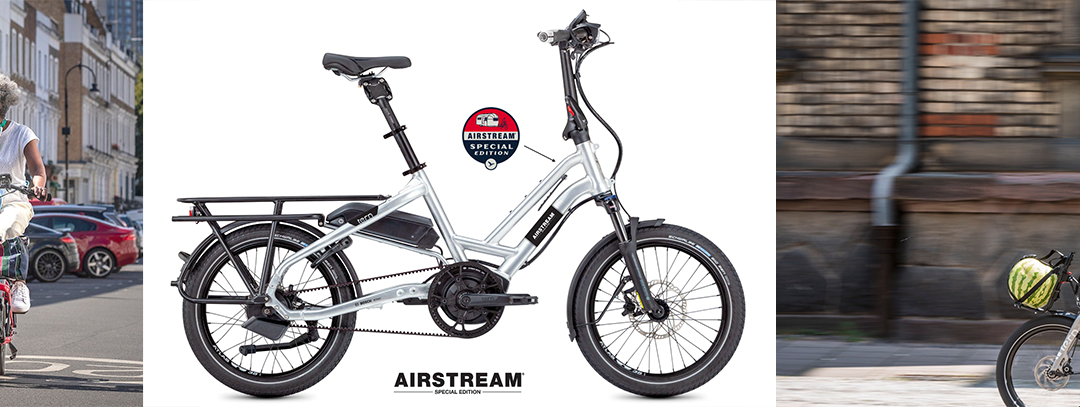Recently I had to fetch my Airstream after it had been left at an RV repair center for five weeks. It turned out to be a much harder experience than I had expected.
Note: Reposted with permission from our friends at AIR GEAR
It’s monsoon season here in southern Arizona, and that means the trailer had been baking in 100+ degree sun most days, and deluged by frequent heavy thunderstorms on other days.
This sort of weather takes a toll, so I wasn’t surprised to find that part of the hitch had rusted and wouldn’t move until I loosened it up with some silicone spray. Fortunately, I had a can of silicone spray handy.
I also wasn’t surprised when the truck’s brake controller started complaining that there was a bad connection due to corrosion on the 7-way plug. For that, I dug out the electrical connector cleaning tools from our Maintenance Essentials Kit and cleaned up the corrosion in a couple of minutes.
Solving these problems was easy, but I was reminded that if I hadn’t had a few simple tools and supplies on hand, I’d be stuck. In my early days as an Airstreamer this sort of thing drove me insane with frustration because I didn’t know what to do—and lacked the necessary gear to solve simple problems.
SO WHICH SPARE PARTS AND SUPPLIES SHOULD YOU ALWAYS HAVE IN YOUR AIRSTREAM?
You can guess my general opinion by looking at what we recommend in our store. The kits we have put together will solve the majority of problems most commonly encountered by Airstream travelers. None of them take a up a lot of space, and all of them are worth their price many times over when something goes wrong.
The most common problems are the mundane little things like a loose screw, dripping plumbing, a minor leak, rusty hitch parts, missing rivets, and flat tires. None of these should be allowed to interrupt your trip, because they’re all easy to fix yourself in a few minutes.
Even a mechanically-inept person can learn to change a tire, replace a rivet, and fix a plumbing leak. Each of our kits comes with instructions, and in many cases we’ve made videos to show you how, too.
Spare parts are another matter. People tend to carry spares of the things that have given them trouble in the past, even if they don’t make sense. When my external city water connection cracked in freezing weather, I carried a spare for years (and never needed it). Recently an Airstreamer told me that he had to replace his defective thermostat twice, so he always traveled with a spare thermostat.
But these types of problems are more of the “struck by lightning” type, and not what usually afflicts Airstreamers. And you can’t carry a spare of everything that might possibly fail. So which spare parts should you always have?
1. THINGS THAT ARE CHEAP, SMALL, AND ESSENTIAL
When I went to pick up my Airstream at the service center, I found that a hitch pin had gone missing. Without it, I couldn’t hitch up. Fortunately I always have a spare hitch pin and a few other small pieces of hardware that are needed for the hitch. Otherwise, I’d have to go find an open hardware store to replace a $0.80 item.
Take a look at your Airstream (and especially the hitch if you have a trailer) and think about little things that you might take for granted: cotter pins, hitch pins, bolts, screws, rivets, etc.
2. CONSUMABLES: LUBRICANTS, TAPES, BATTERIES, BULBS, PROPANE HOSES, FILTERS
We did a blog earlier about 6 different types of tape and how incredibly useful they can be for minor repairs. You can also read about lubricants and where they’re needed on an Airstream trailer.
You should always have spare 9v batteries for the smoke and carbon monoxide detectors, light bulbs if your Airstream is older and doesn’t have LED lights, a pair of propane hoses, fuses, and replacement water filters if you use those.
3. “UNOBTAINIUM” PARTS
Most parts needed for an Airstream can be bought at hardware stores, auto parts, stores, and RV dealers—but once in a while there’s a really odd and essential part that is too hard to find when you’re in a remote area.
For me, it’s the weird Zerk (grease) fitting that Hensley Manufacturing uses on its hitch. The spring-loaded end of that fitting eventually wears down, and when it does, the hitch bars will fall out. It’s simple to replace but good luck buying one anywhere but directly from Hensley. I keep a pair in my spare parts tackle box.
AND WHICH SPARE PARTS SHOULDN’T YOU WORRY ABOUT HAVING ON HAND AT ALL TIMES?
1. STUFF YOU’LL FIND NEARLY EVERYWHERE
You can safely skip duplicate parts and supplies that are easily found at Wal-Mart or other general-merchandise stores, like tank chemical and sewer hoses.
2. THINGS THAT RARELY FAIL
It’s possible that your thermostat will fail, but not very likely. Same goes for the water pump, city water fill, ceiling lights, door handles, breakaway switch, and shower head. These are the sort of things that parts stores are for.
And, because Airstreams use many of the same interior parts and appliances as other RV brands (shocking, but true!) you’ll likely find most small parts through a local RV dealer or Camping World store.
3. PARTS THAT ARE BIG, HEAVY, OR EXPENSIVE
I don’t know about you, but I’m certainly not toting a spare microwave oven, air conditioner, or refrigerator around!
All RVs have weight capacity limits which you need to respect. So if a tool or part is heavy, think twice before packing it. If you aren’t likely to need it and it’s not essential safety equipment (like a tire changing kit), it should probably be left at home.
4. THINGS YOU CAN EASILY WORK AROUND
Some things can fail but aren’t going to ruin your trip. For example, if the electric hitch jack fails, there’s a tool provided so that you can raise and lower it by hand. So that’s not an emergency situation and you can continue with your trip until it’s convenient to get a repair.
The same is true of many things. On one trip my refrigerator failed but a quick trip to the local grocery store yielded a chunk of dry ice. I put that in the freezer and it kept both freezer and refrigerator cool enough to keep traveling.




